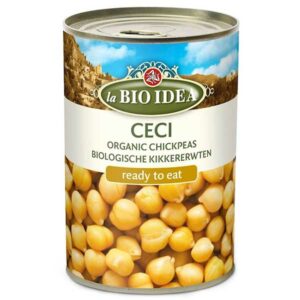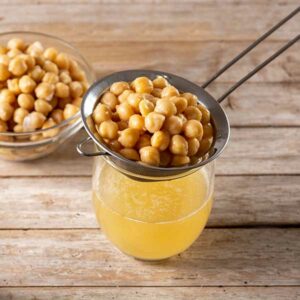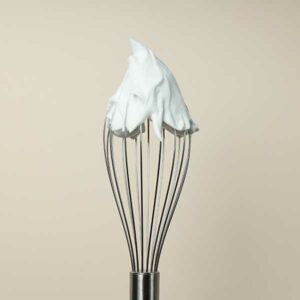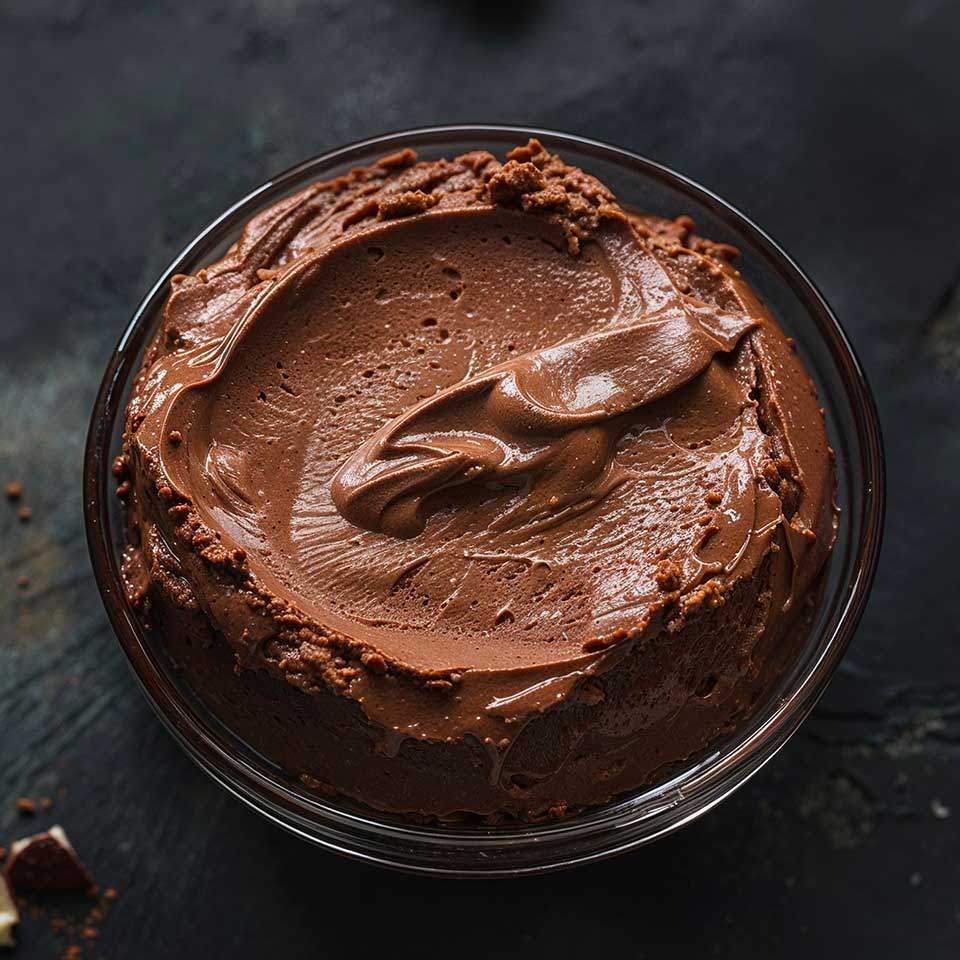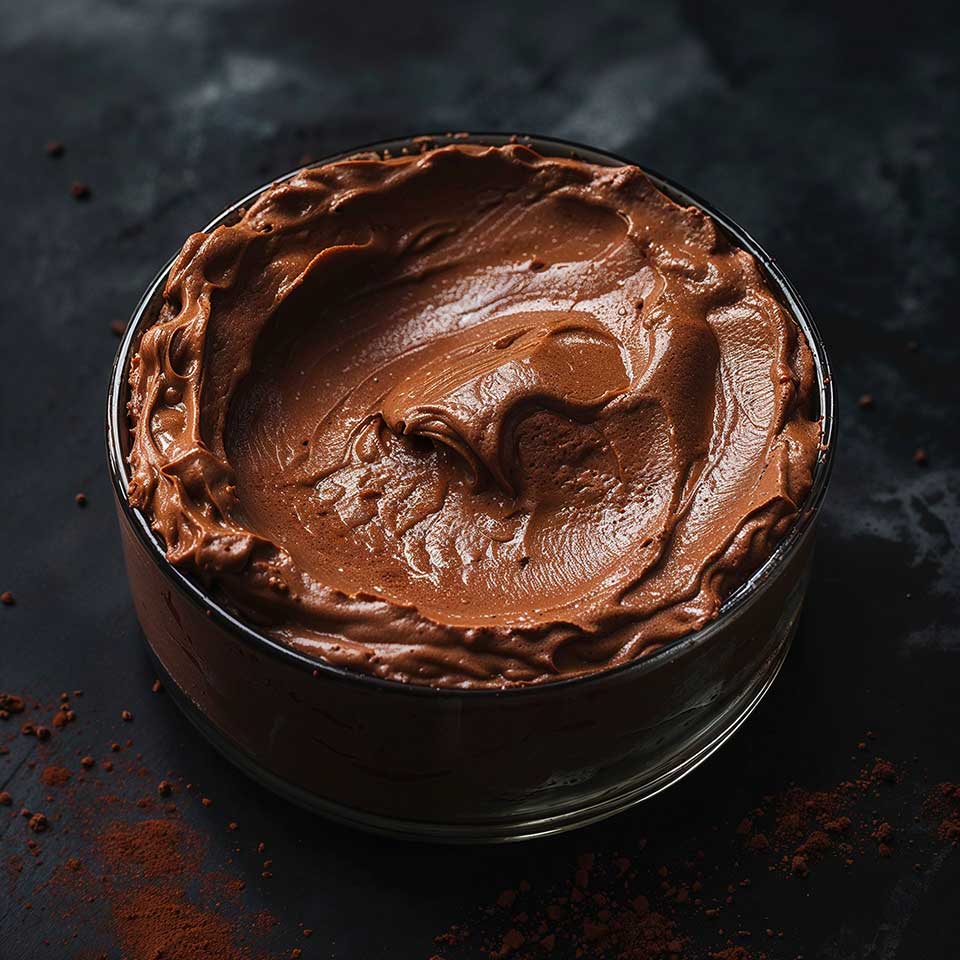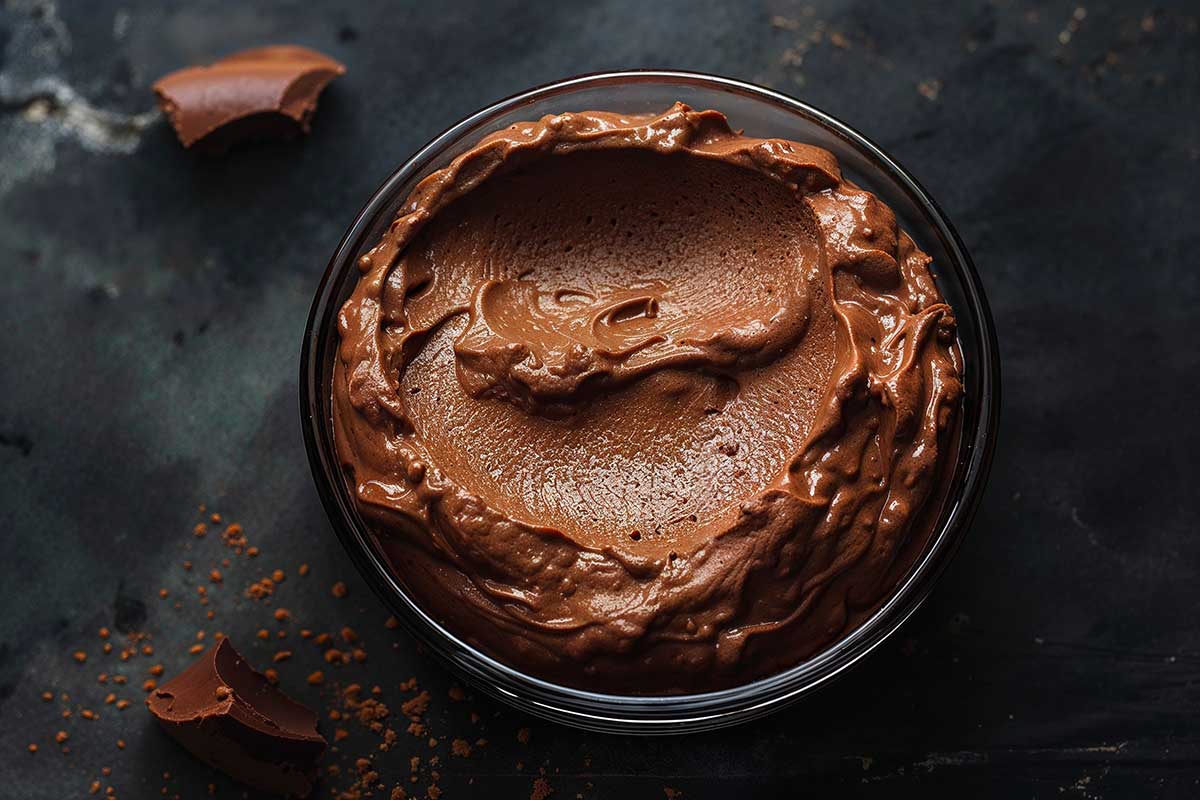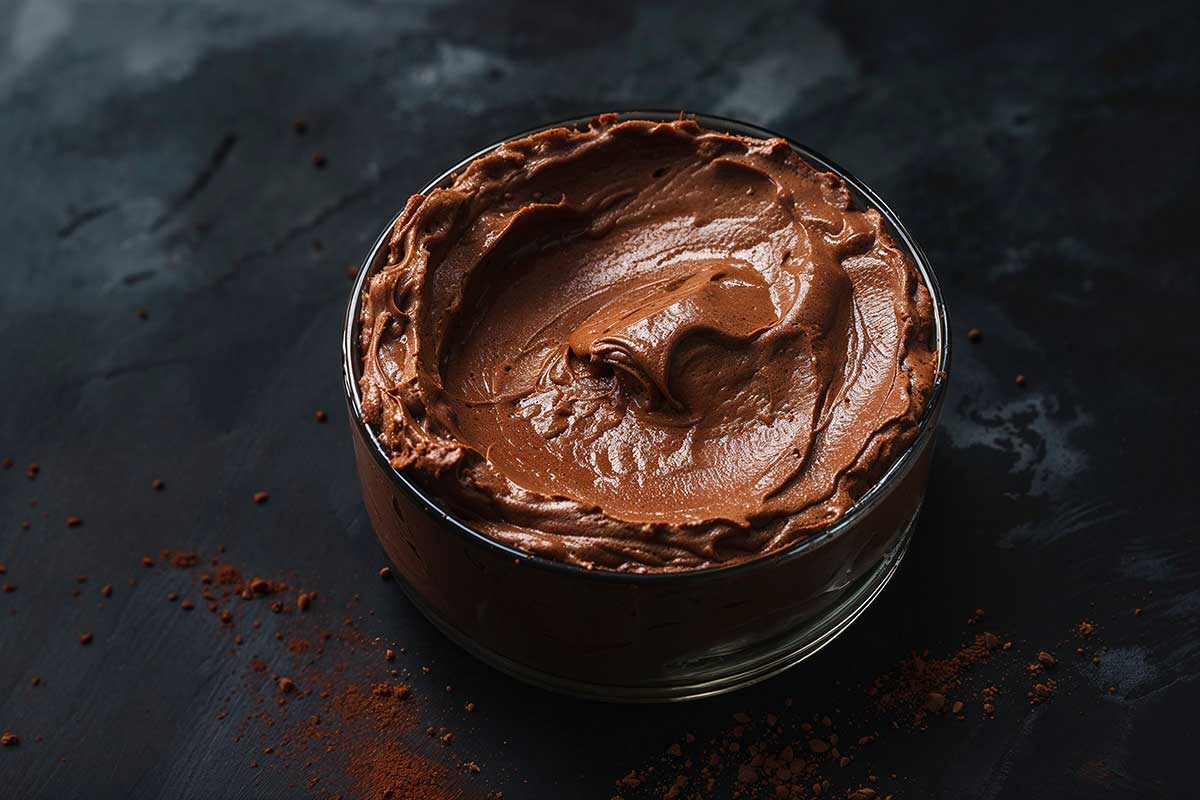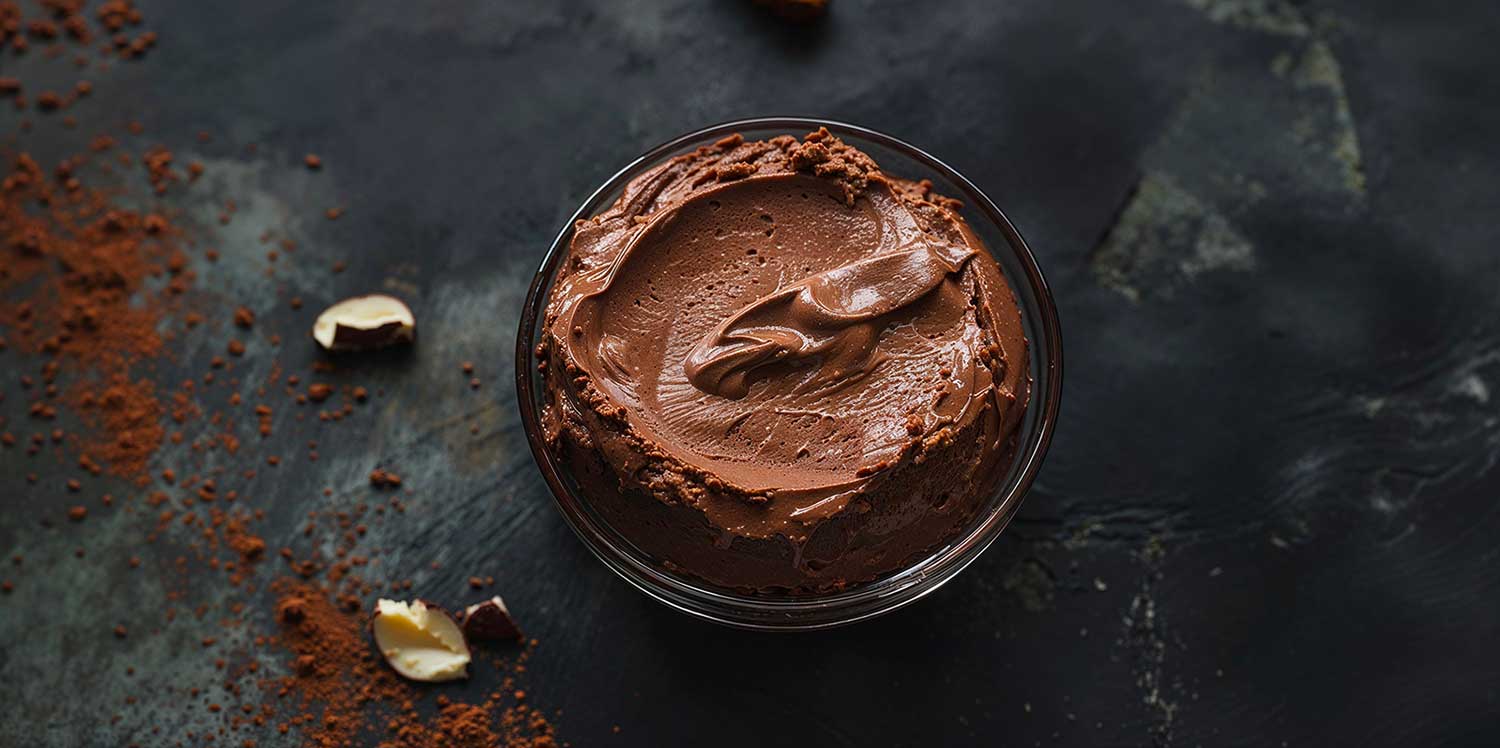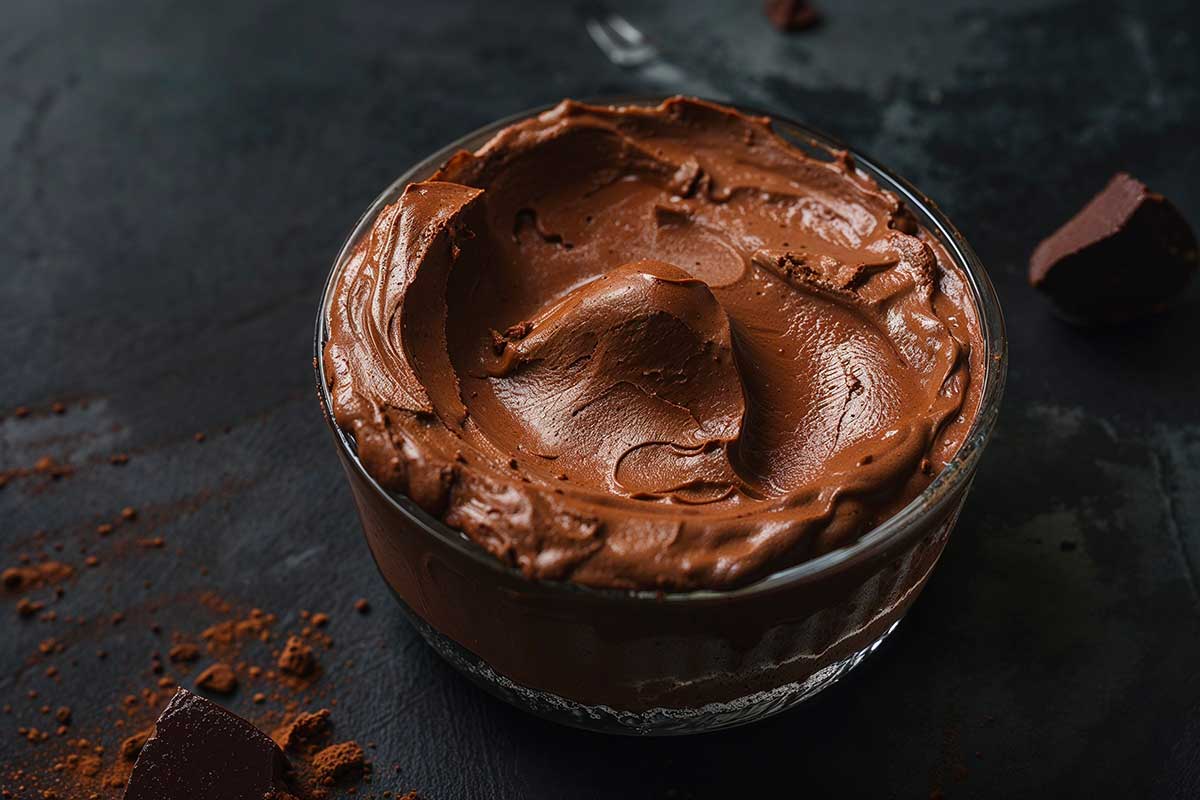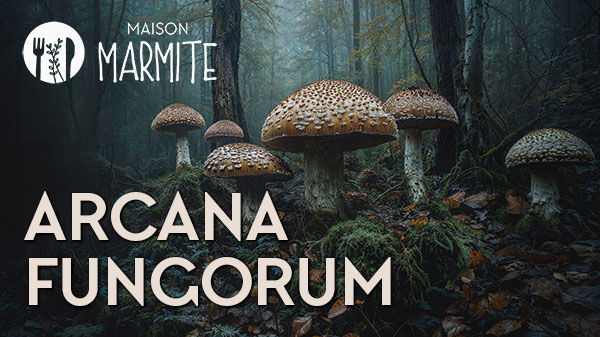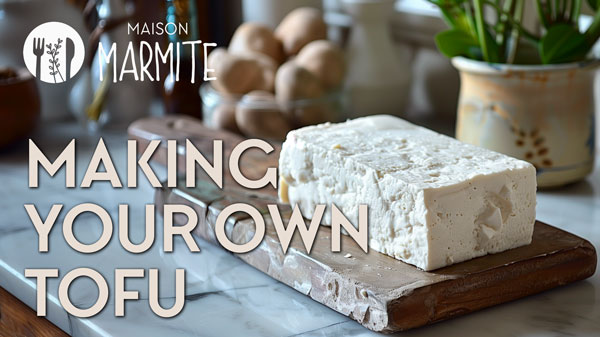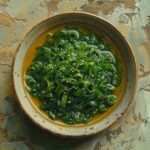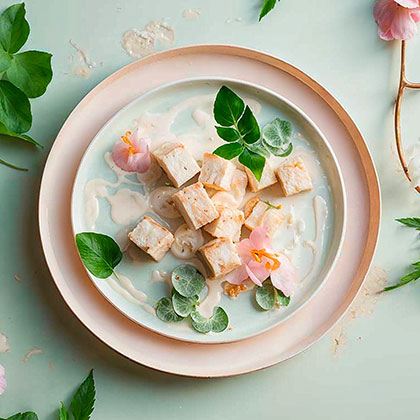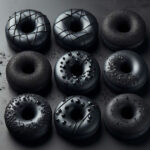Chocolate mousse

Cooking Time
Prep Time
Difficulty
Cuisine
If you’re looking for an easy dessert that will blow everyone away, look no further than this chocolate mousse! Seriously, it’s wicked and takes a mere 15 minutes to concoct! I’ver served to a dozen or so people and the verdict is unanimous. The funny thing is asking your guests if they can guess the two main ingredients…
Of course, it contains dark chocolate but the second ingredient is just incredible, magical and largely unknown: aquafaba! This is nothing more than the water left over from cooking legumes; it’s the rather viscous water you find in a tin of chickpeas and which is usually poured down the sink. Sacrilege! That, however, will now be a thing of the past, you will preserve it as something precious! Even if you don’t need it right away, it can be frozen.
The use of aquafaba is a relatively new discovery (2014) which we owe to Joël Roessel, a Frenchman who was looking for an alternative for eggs to make vegan floating islands. This discovery shook up the world of plant-based cooking. As an aside, the word is a Latin contraction of the words Aqua (water) and Faba (bean).
Practically speaking, it’s simple: grab yourself a tin of chickpeas (400 gr) and, using a strainer, separate the chickpeas from the aquafaba. You can, for example, make hummus with your chickpeas, the recipe can be found here. Then you just whip up the aquafaba with your food processor… that’s it.
Remember that your aquafaba MUST be at room temperature.
As far as volume goes, you can use the same weight of chocolate as the aquafaba. To be precise: you should weigh the aquafaba in its liquid state, not already whipped up! In short: you have 170 grams of aquafaba, you weigh out 170 grams of chocolate.
That said, you can adapt the volumes according to your preferences: light and fluffy or more consistent. The more aquafaba, the lighter your mousse will be. Generally speaking, a 400 gr tin of chickpeas delivers about 170 gr of aquafaba (depending on the brand). Personally, I use closer to 200 gr of chocolate.
The other ingredients are optional, you can add a tablespoon of brown sugar and a teaspoon of vanilla extract, if you want. For the chocolate, get a dark unsweetened chocolate with 60%, or even 70%, cacao content. I personally go for the Noir Pâtisserie 60% Cacao from Bonneterre.
This recipe is simple and free: here are two alternatives by Maison Marmite. The first is a classic and results in a very airy mousse, the second one renders the mousse more dense. Up to you to try both and tell us, in the comments, which one you prefer.
The beginning of the recipe is the same: whip up the aquafaba and melt the chocolate in a double-boiler. Then you incorporate the chocolate into the aquafaba or vice versa. It’s astonishing but the results are very different.
When you add the chocolate to the aquafaba, your mousse will be airy and light. This is a classic technique: leave the chocolate to cool down briefly before pouring it onto the aquafaba, that’s still in the food processor (or a bowl if you’re using a regular whisk). You can use the food processor during an extra 10 seconds or so, or you can gently work it in with a spatula, in order to keep it airy.
The alternative is to pour the aquafaba into the chocolate and gently mix with a spatula. Be aware though; because there will be a temperature difference between the two ingredients, the chocolate will have a tendency to harden again. I, personally, leave the chocolate in the double boiler and adjust the heat up or down depending on what’s needed; you have to stir continuously.
Seen as I prefer a more dense mousse, I continue stirring until the aquafaba loses some of that airiness. The result is a chocolate mousse is more solid, a lot less airy but definitely with more character.
You’ll find more clarification below about these two techniques. And, please, do tell us which one of the two you prefer, in the comments.
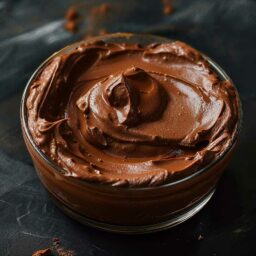
Chocolate mousse
Equipment
- Food processor or mixer/whisk
Ingredients
- The water from a tin can of chickpeas about 170 gr
- One bar of dark chocolate about 200 gr
- One tablespoon of brown sugar
- One tablespoon of liquid vanilla extract
Instructions
- Separate the chickpeas and the aquafaba with a strainer. Weigh the aquafaba and the chocolate. More information about this in the above text.
- Pour the aquafaba in your food processor and whisk at full speed. As soon as the mixture becomes thicker, add the sugar and vanilla extract. Continue whisking until you obtain stiff peaks. You can also use a hand mixer and a big bowl.
- Melt the chocolate in a double boiler as it needs to be very liquid. Mix regularly and delicately with a spatula.
Alternative 1 (for an airy mousse):
- When the chocolate has melted completely, remove it from the double boiler and set aside; the chocolate should be at room temperature but still liquid.
- Pour the melted chocolate on top of the aquafaba peaks. If you’re using a food processor, mix again for 10 - 20 seconds. If not, just gently fold the two ingredients into each other with a spatula until you have a homogenous mix. scrape the sides and bottom of the bowl well.
- Immediately pour the mix into 4 or 5 ramekins (somewhere between 4 to 6 depending on the size of your little bowls/ramekins). Note: do this straight away or the mousse will solidify.
- Place in the fridge for at least two hours.
- You can add fruit, cacao nibs or chocolate granules.
Alternative 2 (for a more dense mousse):
- Leave your chocolate in the double boiler on a very low heat.
- Gently add 1/4 of your whipped aquafaba to the melted chocolate. Blend with a whisk or a spatula.
- If, in the meantime, the chocolate starts to solidify, turn up the heat slightly.
- Add the rest of the aquafaba, in 3 or 4 times and make sure to scrape the bottom and sides of your bowl. If your aquafaba loses some of its “air”, don’t worry, it’s perfectly normal.
- Immediately pour your mixture into small bowls or ramekins (between 4 - 6, depending on size); don’t wait, because the mousse will solidify.
- Place in the fridge for at least two hours.
- Decorate with fruit, cacao nibs or chocolate granules.
A recipe proposed by Maison Marmite



